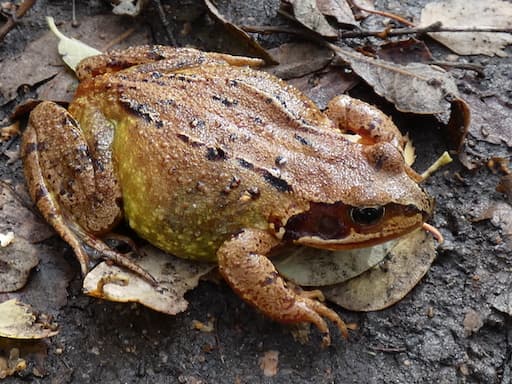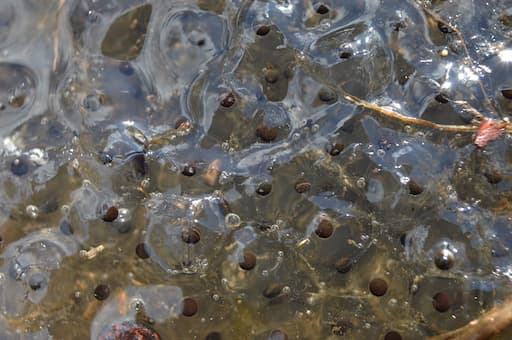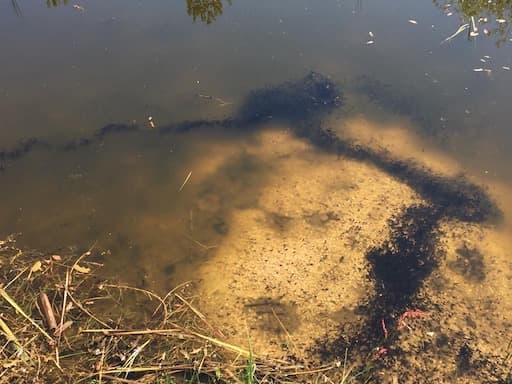About Amphibians
These clever creatures are just as much at home in water and on land. Frogs, toads and newts are all amphibians.
They have a backbone, they're cold blooded with soft water permeable skin - that means air can go through their skin - and many amphibians breathe through their skin instead of their lungs. They spend their time out of water in damp places like grassland or in leaf litter or beneath fallen logs.
Now watch this video to learn more about amphibians.
Common Frog
Adult common frogs spend the winter under rocks, or at the bottom of ponds, or you might even have them under your compost heap at home. They don’t truly hibernate, but essentially they are inactive over winter. In early spring they will head to a pond or standing water to breed.
Adult common frog...
- The males grow to about 9 cm and the females can be up to 13 cm long
- Colour - grey, olive green, yellow, brown
- Notice their dark patches on their backs and their striped back legs
- They have a dark ‘mask’ behind the eye, and an oval horizontal pupil
- They can breathe through their skin as well as their lungs
- They are most active at night
- Listen for their soft repetitive croaking
Jock knows spring is definitely under way when, by March, he sees clumps of frog spawn just under the surface of ponds, ditches and sometimes even in puddles. He is always a little anxious if it’s frosty as the frogspawn can die if it's too cold. He is fascinated by frogspawn, and watches as the weeks go by and the tadpoles develop.
It takes them two weeks to hatch; they have gills so they can breathe underwater. They feed on algae, becoming speckled with gold/brown as they grow. They go on to munch on leaves, moss and even small insects. From around 16 weeks the tadpoles start to grow their back legs, then front legs . Lungs form so the young froglets can breathe above water. Having fully absorbed their tails, they leave the water as young froglets, usually in the early summer, but sometimes as late as September.
This whole process is known as metamorphosis.
A young frog’s idea of a slap up dinner comes in the form of flies, slugs and snails which they catch with their sticky tongues-yuck!
Jock is always careful with his huge feet at these times so he doesn’t squash any!
Froglets and adult frogs are on the menu for owls, birds of prey, otters badgers and weasels. By laying loads of eggs, frogs hope that some will make it to adulthood, because fish, beetles, newts, rats and even foxes and hedgehogs think frogspawn makes a tasty treat!
Jock says : If you find frogspawn, enjoy looking at it safely from a distance, don't be tempted to take it home - please don't disturb it ! And don't be tempted to move it to another pond, as it could spread disease.
To find out more about frogs Common Frog (Froglife).



This is part of the Amphibians In Spring information.